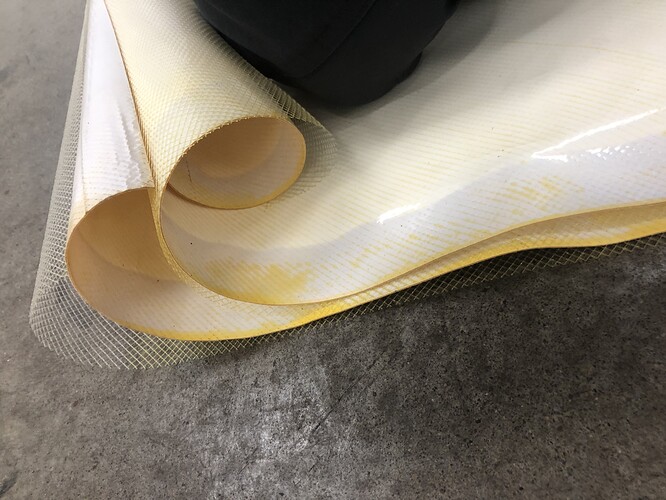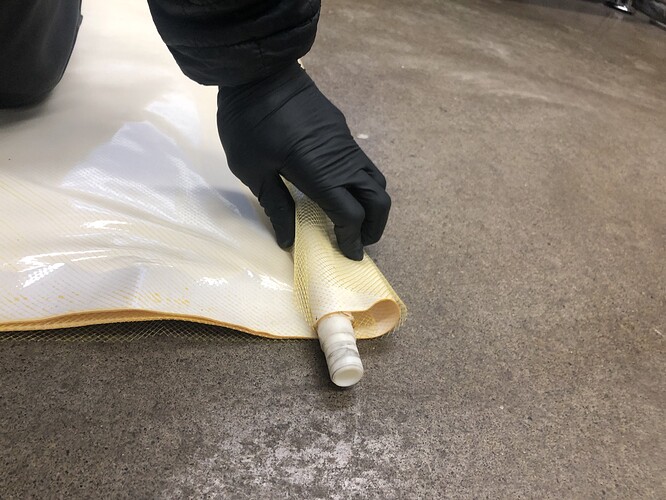i have been. Thanks @MagisterChemist
I believe it was this one.
thx @thesk8nmidget
What sorts of results did you get with that in terms of clean recovery, throughput etc?
I believe it was averaging 40-50 liters an hour.
I also found some membrane pictures cut up to show the inside for people curious.
I’m gunna put together the funds and grab a mini test skid in the next couple weeks here. I am planning to use this for dewaxing in n-butane but will also grab a few different filters to play with solvent removal and color remediation.
I just have a couple questions for those with experience. You would think the dewaxing membrane would be the 600-800 Da but the company I am talking to said I should try the 3000 Da and pre chill the solution just like magister recommends above. If I do go with a 3000 should I expect any color removal with that filter or would I have to go through a 600-800 filter after to grab chlorophyll?
I’m also waiting on responses from CAT and Hydracell to see if their pumps will run n-butane. Has anyone here tried it or can recommend a high pressure pump for butane.
It always takes longer than expected to get these projects started but I’ll try to update with my progress and some data when I get it going.
I don’t have much hands on experience with butane, but as far as the particle size ratings, those are ratings taken from water and can’t be applied to other solvents. They are not even accurate for ethanol which is of a more chemically similar nature to water, with butane, you can’t predict how they’ll respond. The pores actually shrink and grow in different solvents, and furthermore, they have polarity-selective effects that also differ in a different solvent.
In my experience, most membranes I’ve tried that say 600-800 sort of range, still rejecting 90% of cannabinoids, so in ethanol at least, the MWCO seem consistently lower than ratings imply.
With butane, i have a lack of hard test data, but I’m super excited to see what you come up with in that area.
Keep in mind you will need to ensure the membranes stay wetted – you can’t let all the butane on them evaporate.
As far as suggestions on pumping it maybe one of the engineers such as @Lincoln20XX has some ideas about that?
I kinda figured that was the case so I’ll probably end up buying a bunch of filters and playing with them. Luckily I have a few tons of hemp to do r&d on. As far as keeping the membrane wet I think I have a solution. I will plumb a tee before the membrane inlet that opens to an expansion chamber. The plan is to flood fresh solvent after filtering the solution, drop pressure to 100 psi, fill the expansion chamber to 100 psi with nitrogen, then open it to the membrane. This should keep the system at or below an 80% fill but still keep the butane liquid at any temperature that it would realistically see. Ideally I can mount my membranes vertically to ensure it stays totally wet but I have to wait until Monday to talk with the Synder guys about all of that.
I might be overthinking that part but the people at Evonik made it sound like I was crazy for even talking about doing this so I wanted to take extra precaution.
That sounds like a good approach. The VT and XT would be good choices to try and they’re known from factory testing to be alkane compatible. A polyamide type like the 600-800 NFG isn’t likely to get good flux because it’s of an extremely hydrophilic nature. That’s probably another reason why they didn’t recommend that option.
The only pump that I am directly aware of that is rated to pump butane are the pneumatic Haskel R600 pumps. I’m not certain how appropriate they would be for this application.
I am certain there are others out there. I haven’t looked other than a quick 5 minute google.
That would, i believe, be fully sufficient to run a membrane like VT that only uses pressures up to 125 psi. Wouldn’t be sufficient for solvent recovery though.
Corken makes an LPG transfer pump but it is only rated to 350 psi and 125 psi differential. It is also massively oversized for my current scale. MVP also makes a transfer pump but it has too much pulsation and again has pressure limitations.
I am still hopeful that the hydracell will work since it is appropriately sized, affordable, and can run dry. The hydracell website mentions that their pumps can work in the oil and gas industry but doesn’t list compatible fluids.
Keep in mind these pumps, they’re thinking of pumping gaseous butane, not liquid. So the transfer rates they list aren’t really accurate for what you’re trying to do.
Corken and MVP both make pumps specifically for liquid transfer. They also make gas compressors but that’s not what I was talking about above.
@MagisterChemist what membrane would you recommend for removal of terps and cannabinoids from a heptane solution ?
The best I’ve found for that purpose so far is puramem selective from Evonik, which rejects quite well at high pressures, and extremely fast. But it is expensive! I encourage you to seek out alternatives.
Thanks, this is a wealth of information you have given us all.
Thanks. I’ll continue to post more, as I’ve always got new ones coming in. Can’t wait till others start joining in.
“Soon” rubs hands together maniacally “soooon”.
Can’t wait till you’re back in the game. You were rocking them before I was!



